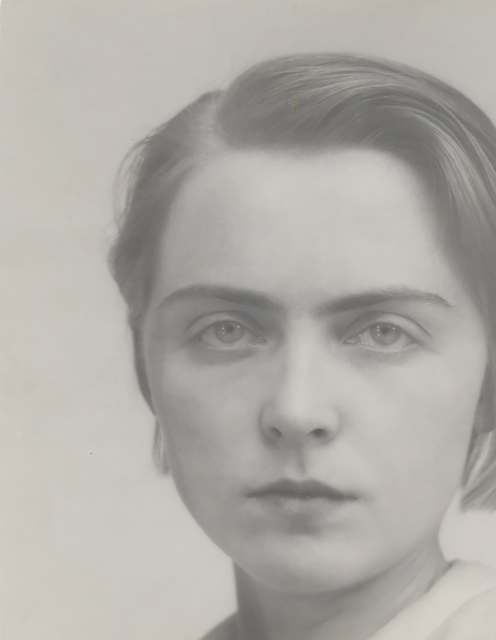Elisabeth Hase (December 16, 1905 – October 9, 1991) was a German commercial and documentary photographer active in Frankfurt from 1932 until her death in 1991, at the age of 85
Hase was born in Döhlen bei Leipzig, Germany. She studied typography and commercial art from 1924 to 1929 at the School of Applied Arts, and later at the Städelschule, under, among other teachers, Paul Renner and Willi Baumeister.
Hase was active as a photographer during the time of the transition from the Weimar Republic to the Third Reich and through post-WWII Germany. She was able to avoid government oversight of her work by establishing her own photographic studio in 1933.
Hase's work included surreal photography, such as close-up photographs of dolls.
She received several awards, several for paper designs and collages. During a two-year collaboration in the studio of Paul Wolff [de] and Alfred Tritschler [de], Hase took architectural photographs in New Objectivity style for the magazine Das Neue Frankfurt (The New Frankfurt) and documentary photographs of modern housing projects, including those of Ferdinand Kramer.
In 1932, Hase started her own business. It focused on timeless designs like still life, structures, plants, dolls, people, especially self-portraits. Often she used herself as a model in her photographic “picture stories.” Cooperation with agencies like Holland Press Service and the Agency Schostal[2] enabled her to publish her photographs internationally.
Despite the bombing of Frankfurt in 1944 by the Allies, Hare's photographic archive survived the war without major damage. Many of those works are now part of the collections held by the Folkwang Museum in Essen, Germany, in the Albertina (Vienna) in Vienna, and in the Walter Gropius estate in the Bauhaus Archive in Berlin, as well as in private collections in Germany and abroad.
Despite loss of her cameras and other technical equipment in the chaos of war, Hase was able to resume taking photographs in 1946 by the help of emigre friends who provided her with film and cameras to use. Among others subjects Hase documented was the reconstruction of St. Paul's Church in Frankfurt.
From 1949, her work focused on advertising, consisting mostly of plant portraits.
Hase died at the age of 85 in 1991 in Frankfurt am Main.
Source: Wikipedia
This new discovery is a rich body of work by a female artist who was photographing during the time of the transition from the Weimar Republic to the Third Reich and through post-WWII Germany. Hase's photographic compositions are comparable to a number of her avant-garde contemporaries such as Florence Henri, Ilse Bing, and Germain Krull.
Elisabeth Hase (1905-1991) was born in Germany and began her artistic studies in 1924 at the Art Academy in Frankfurt. During World War II Hase was able to avoid the politicization of her work by retreating to her studio. This however would not prevent her work from being wholly untouched by the war. During the air raid on Frankurt in 1944 her cameras and other equipment were lost however, quite remarkably, her archives of glass and film negatives survived. Most intriguing are Hase's self-portraits which experiment with identity and perceived reality. In one self-portrait she has photographed herself in the reflection of a silver sphere, she and the room are warped on the convex surface of the globe. In another image she is sprawled over a staircase as if fallen, with shoes and purse strewn likewise over the stairs. This practice of role-playing and adopting different personas is seen throughout Hase's portraiture.
Hase's work has been shown in museums across Germany including; the Folkwang Museum, Essen; the Historical Museum, Frankfurt; and the Museum of Photography, Braunschweig. Hase's work was exhibited in the show "Who is Afraid of Women Photographers?" at the Musée d'Orsay, Paris, France. Her work in found in prominent museum collections internationally, including The Metropolitan Museum of Art, The National Gallery, the Museum of Modern Art, The Nelson-Atkins Museum of Art, Ackland Art Museum, the Chrysler Museum of Art, Folkwang Museum in Essen, The Albertina Museum in Vienna and The Bauhaus Museum of Design in Berlin.
Source: Robert Mann Gallery
